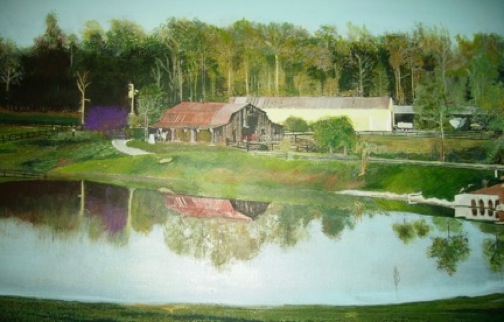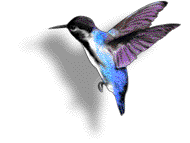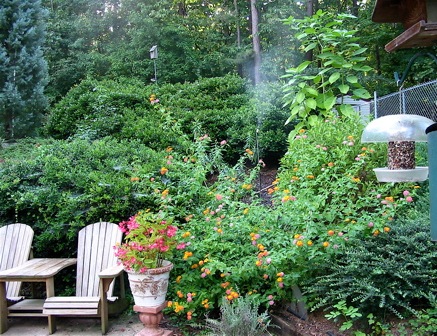-
not about bird cams… something better!
Here’s a picture (actually a painting I did several years ago) of the back 40 of the equestrian center where I work part-time. It’s situated on 400 acres, about one hour northwest of Atlanta. As you can very well imagine, it’s prime wildlife habitat. We have some good-and not so good inhabitants. The latter is being inundated with house sparrows, and several coyotes driven there by development.
This blog was supposed to be on bird cams, and I sure do wish we had a few of them scattered around the place! Today there was an amazing occurrence and I missed it, missed it I tell ya… a once in a lifetime opportunity!
A boarder was grazing her horse near this very pond earlier today. She in fact phoned me on the way home to tell me what had happened. By the tone in her voice I could tell it was something out of the ordinary… “a Bald Eagle” she said. It had been spotted stealing eggs from a nest. “Huge” she said, with a wingspan wider than the length of her horse. She said the bright white head was unmistakable, and it must have been raiding a crow’s nest as several were trying to dive-bomb and chase him away, still carefully keeping a distance.
We can only hope this Bald Eagle thinks the diggs are pretty decent around here, and decides to take up permanent residence at Moonlight Stables. Sorry there’s no photo… we’ll definitely be on the look-out though!
-
Time to Dust Off those hummingbird feeders
The great hummingbird migration has begun!
Now is the time to get your hummingbird feeders out from storage and give them a good cleaning for the upcoming season. Plain hot water works, even if you send them through the dishwater, be sure to rinse them thoroughly to remove any residue. Along the Gulf of Mexico, Ruby Throats have started to claim territories, with other species following close behind.
Hummingbird season is an exciting one for many backyard birders, as these little sprites tend to provide some mesmerizing entertainment. Many folks could just sit and watch hummingbirds’ shenanigans for hours on end. Aside from the sugar water in hummingbird feeders, moving water is a very big attraction for them. Bathing, drinking and playing in birdbath fountains or bubblers comes naturally for hummers – they’re drawn to it like a magnet.
If you’re looking to attract more hummers, but already have enough hummingbird feeders, consider adding moving water to your landscape. Leaf misters for instance, are wildly popular among hummingbirds and butterflies as well. In the scolding heat of summer, the gentle mist is a most welcomed addition for many local wildlife species. Leaf misters may be installed in a variety of fashions. Ours stands upright in the garden twisted around a simple plant stake.
Treat your hummingbirds to a fun water feature this season and you’ll be rewarded by increased numbers and some fascinating activity and behaviors from the little guys!
Oh yeah… maybe this is the season to try making your own nectar too. It’s really quite simple and only takes a few minutes. Here’s the recipe: one part plain table sugar (cane) to four parts water. That’s it! Never use anything other than pure cane sugar (white table sugar) as it’s harmful to hummingbirds. There’s really no need to boil the water, we boil one cup simply to dissolve the sugar quicker and more effectively. If you do boil the water, be sure it has cooled before filling your hummingbird feeders. Store extra nectar in the fridge for up to two weeks. Now wasn’t that easy?
-
Offer nesting materials early to further entice birds
Encourage birds to nest in your yard by offering them a good variety of nesting materials. Simple things you may likely already have around your home are fantastic, items which birds will use for nest building.
Got a pet? Cat and dog hair are some favorites, as are feathers, and decorative mosses. Spanish moss, sphagnum moss, raffia and aspen fiber are perfect nesting materials birds will go for! Brightly colored cotton yarns add to the mixture also helps grab their attention. One of the tricks is to have your nesting materials out before the nesting season begins, and in plain view where birds will easily see them.
Lots of kits and fun holders are available for wild bird nesting materials. The Birdie Bell shown here actually does triple duty. It will hold fruit in summer for the more exotic, migratory birds, and seed bells or suet in winter to help sustain your regular crew. Come spring, simply fill the bell with nesting material. An item like this with year round usage is a good value. But truth be told… you can use a simple suet cage to offer nesting materials as well. Even the mesh produce bags from the grocery store (like the kind apples come in) will effectively hold nesting materials that birds can access.
So aside from the birdhouses and feeders, be sure there is a fresh water source too. Be it a creek or bird bath, all species of wild birds are drawn to water. And don’t forget: start gathering materials now that will entice feathered friends to take up residence! Happy Birding!




